Does brandy need a glow-up?
By Claire DoddFrustrated producers agree that French brandy is plagued by its fusty image and are keen to find a way to inject a sense of cool into a category that has stagnated. However, how they do that is another matter.
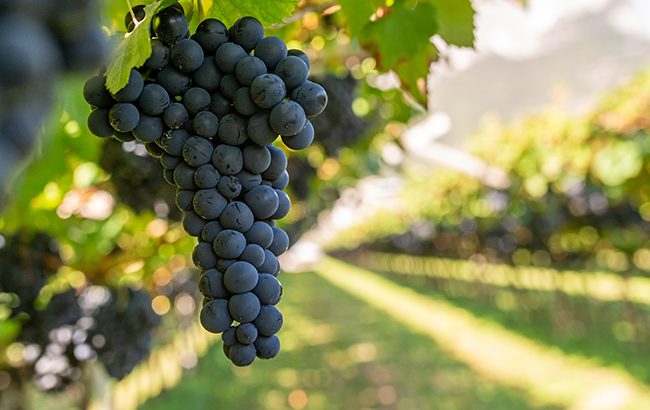
*This feature was first published in the May 2025 issue of The Spirits Business magazine.
“I love what we’re up to with Seven Tails. But what does it mean to be innovative in the brandy category if people don’t really know or care what a brandy is?” muses Joel Fraser, the brand’s co-founder. “Who cares if it’s innovative or not?
“We’ve done an activation in America two years running. We’ll possibly do it this year as well, in November. And it’s called the ‘Who gives a fuck about brandy?’ week. They removed the word ‘fuck’, which was a bit of a shame.”
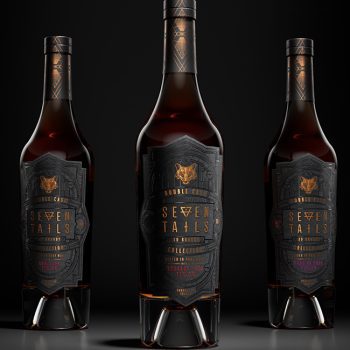
Who cares about French brandy? It’s a bold question. But in a category shared with flashy sibling Cognac, and the increasingly buzzy Armagnac and Calvados, whose eyes are on France’s brandy makers? It’s clear that consumer awareness is lacking. So, the question really is not if consumers care, but could they? Or when will they?
“Every year it feels like maybe brandy is going to have its moment because it’s got the potential,” adds Fraser. “It blows my mind that brandy isn’t just the most revered spirit on earth.”
It’s been a tough few years for the French brandy category. Following buoyant pandemic sales, the value of French spirits exports fell by 6.5%, and volumes dropped by 1.8% to 46.5 million nine-litre cases in 2024 as tensions in China caused a double-digit drop for Cognac and Armagnac. It follows double-digit declines in 2023 for both volume and value, according to the data from Fédération des Exportateurs de Vins & Spiritueux (FEVS). In April, China confirmed it would extend its anti-dumping investigation into European Union brandy by three months to 5 July 2025.
And while Euromonitor International can’t yet confirm its new data for the year end, Spiros Malandrakis, head of research – alcoholic drinks, says it “appears to follow a similarly sobering trajectory to Cognac”. Add in the looming spectre of president Donald Trump’s impending tariffs from the US and you have a heady headwind to contend with.
“The biggest question mark for me is the state of the US economy, and, most importantly, the US consumer confidence,” adds Eric Le Bouar, managing director of Cognac house Delamain. “This commercial world that has been launched by president Trump will, at some point, for sure, impact the US economy; how will the US consumer react to that?”
Speaking about Cognac specifically, Malandrakis predicts continued declines for the next three to five years, driven largely by the economy. But he warns its slump holds a wider lesson. “Is this a structural or a cyclical decline? I think it became trapped in its own aspirational traditionalism,” he says. “That was its advantage for a number of years – that association with tradition, houses making it the same way for hundreds of years. But that became stale after a point. If a category doesn’t innovate, it gets stuck. We’re already the third year in of double-digit decline from the global level, and there’s no end in sight.”
He adds: “It needs to hear the cautionary tale of what happened with wine; they doubled down on this kind of aspiration and traditionalism. They refused to engage with younger demographics, and in the process, they entirely lost the Gen Z consumer.”
Finding a foothold among younger consumers is “something that needed to happen yesterday”, he adds. “It needs an evolutionary approach to everything they do, the way they speak about the industry, the way their price points work, the advertising campaigns, their design cues.”
Innovation needed
Dawn Davies MW, head buyer for The Whisky Exchange and Speciality Drinks agrees, but says there are some signs of innovation. She says: “Brandy as a category in Europe is recognised, with Spanish, Greek and German brands doing well. People don’t think about French brandy in the same way.
“Bar Armagnac, there is little understanding of French brandy, and very little quality products sold over here [in the UK], so there is a big challenge. At the moment, it isn’t a category that is doing anything really exciting. But with more brands looking at launching new products outside of the rigorous AOC restrictions, I think it’s a category to watch.”
There are a number of brands already making the shift. Seven Tails was launched in 2020 by Fraser and Arnaud de Trabuc (former president of Hine Cognac), and includes XO and Spiced expressions. With its disruptive packaging and positioning as the “the go-to cocktail brandy”, it aimed to shake the market with its blend of French brandies, Cognac and Armagnac aged between five and 30 years, and finished in Port casks.
Volumes remain level this year from last, says Fraser, something he describes as “frustrating”. It is looking to move its bottling of Seven Tails Spiced to the US to avoid looming tariffs. Is Fraser surprised there aren’t more competitors by now?
“Seven Tails stands out as innovative in its packaging, and in its brand story. Now you have Burnt Faith [a London-based brandy distillery] singing their own song about brandy without boundaries, pushing back on the French appellations.
“The problem brandy has is the French – they’re so good at what they do, but they just do not modernise. The big boys are just too big to be cool. They’re like Lewis Hamilton. But we need brandy to catch up first, and then being the most innovative brandy will mean something.”
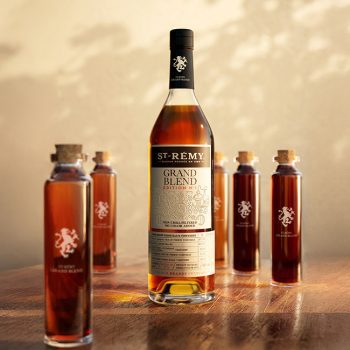
There are signs more traditional players are moving to attract a new audience. In November, St-Rémy added Grand Blend, describing it as “a first in the history of brandy”. It is made from five small batch eaux-de-vie, each from different regions, using different grape varieties, distillation methods and ageing processes. Its aim is to attract new consumers to the category while demonstrating the complexity of blending.
It follows the 2020 launch of St-Rémy Signature. Described as the “new face of brandy”, the product was designed for cocktail making, and featured two maturation stages in both new oak and seasoned casks.
Eye-catching bottle
Bardinet is also keeping the new product development going. Slated for October 2025 is Beehive Gold. Using an XO base, the “opulent blend marries sweet, aged eaux-de-vie with the aromatic subtlety of Red Muscadel grapes”. Its eye-catching gilded bottle is intended to reflect the “delicate, honeyed, and golden” taste profile.
Seven Tails too is launching new expressions. Joining its line-up this summer is a Double Cask range. The limited edition is intended to raise the proposition of the brand with a more premium product. It includes a Rum Cask Finish, Madeira Cask Finish, and a Bourbon Cask Finish. Fraser says it also has innovation that “could move the needle for us all in the brandy category” due later this year, though he is tight-lipped on what that will be.
What else can shift the needle? Cocktails are key. Rose-Manon Baux, creative director at Paris bar Le Syndicat, says innovative serves can help, but that bartenders are working against the image of a sleepy category. “We get people excited about it by breaking the old-fashioned image usually related to French brandy,” she says.
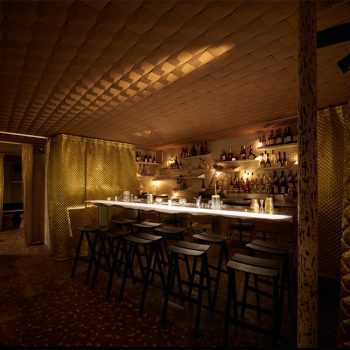
“We offer it as a challenge, a subtle provocation: ‘You think you did not like it, let us show you how French brandy is cool’. We, at Le Syndicat, truly believe that it is just a matter of choosing the right brandy for the right cocktail and getting our guests to let go of their prejudices. St-Rémy can be a wonderful alternative for Old Fashioned-style drinks.”
RTDs (ready-to-drink) are something the Cognac and wider brandy category should try, asserts Malandrakis. “RTDs are one of the few alcohol segments that have actually been growing,” he says.
It’s an area that Bardinet tapped into last year with the launch of its canned brandy and ginger ale offering in the UK. At the time, Léna Rusek, Bardinet brand manager, said the launch would highlight the brand’s “global approach to refreshing and modernising the brandy category image, aimed at capturing the imagination of young generations”.
Innovation, combined with an image refresh and a push towards accessibility and relevancy to a new audience, will stand the category in good stead when the pendulum swings, adds Fraser.
“We’re not going to sit on our hands and just wait,” he says. “But to some degree, do you not think it’s about fashion? Vodka had its moment for a decade. Tequila might have six years in it. Irish whiskey might have three years. And it’ll be brandy again for 18 months. One hundred years ago, it was only brandy that was being drunk the world over. I think these cycles are coming faster and faster. What we really need is one of the celebrity brandies to do well. Brandy needs a little bit of cool factor. [At the moment] it seems to be the least cool category.”
Bright future for Spanish brandy
The Spanish brandy category is in the midst of a transformation as brands seek to attract a younger audience by focusing on storytelling, innovation, and cocktails.
“The future of Spanish brandy on the global stage is bright, provided the industry continues to innovate and adapt to changing consumer preferences,” says Christian Visalli, spirits global managing director at Familia Torres.
Visalli notes that the category is still dominated by drinkers in the 50-plus male age range and is typically consumed “at home in an after-meal moment of conviviality with family and friends, or in traditional bars and restaurants in the form of the well-known Carajillo” – a coffee and brandy serve.
The company believes that a focus on quality, storytelling and sustainability will be key to driving growth in the future. As Visalli says: “We have put a lot of effort in terms of education and introduction of our brands, especially Torres 15 in trendy high-end cocktail bars.”
He believes that the quality and versatility of Spanish brandy makes it ideal for cocktails. For a family-owned producer such as Familia Torres, however, the biggest fear is climate change. “We have actively addressed this challenge by implementing sustainable practices in our vineyards, wineries, and distilleries,” Visalli says.
After dominating its home market, Torres is also looking to expand its footprint worldwide. “The Asian region, especially China, and US are the geographies with the greatest potential for the category to achieve significant future growth, and we expect to see that happening in the years to come,” says Visalli.
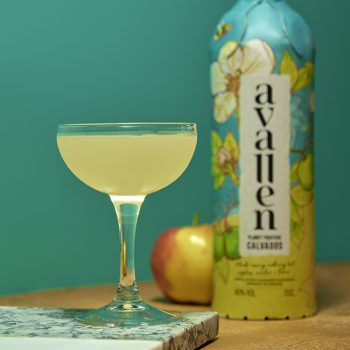
Could a signature serve boost Calvados?
“We haven’t had the luxury of a Margarita, a Paloma, a Daiquiri. We need a serve now. A serve that you can hang volume on,” says Stephanie Jordan, co-founder of Avallen Spirits. Since launching its B Corp Calvados in 2019, with its distinctive and disruptive packaging, the brand is now in 30 global markets, and telling “stories that have not been told before”.
But the next step? A serve that both drives volumes and shifts perceptions of the category. “If you look at the branding of brandy, Cognac, Armagnac, Calvados, it’s Christmas cakey, calligraphy, châteauey, brown, digestivey, sank on the Titanic-ey. Like, no sex appeal. That’s what we’re up against,” says Jordan. “Heavy, and sat in a barrel for 20 years. I don’t think that’s where the momentum is. That’s where we see the need to shift some of the consumption behaviours.”
The answer? “Our Margarita looks like a Calvados Appletini. It’s a retro comeback; twisted, revisited, brought back better. It was a bad drink, but it’s a famous drink. It’s a drink that, if you put it on the menu next to an Espresso Martini and a Porn Star Martini, your UK audience, the American audience, will order this drink. No questions asked.”
In 2024, exports of Armagnac and Calvados saw double-digit drops in value, down by 15.4% and 14.6% respectively, according to Fédération des Exportateurs de Vins & Spiritueux (FEVS). Yet while Calvados volume sales fell by 11.1%, Armagnac volume sales grew by 16.6%. Modern brands such as 30&40 (Calvados) and Armin (Armagnac) show that change is coming.
“The markets are very disturbed by an uncertain geopolitical situation,” adds Marc Darroze, CEO of Darroze Armagnac. “Fortunately, the French market remains buoyant, but this does not compensate for the losses in [US, Russia, and China].”
In its 50th year, the family-run brand is looking to new-product development that is “both modern and respectful of our history and tradition”. In April 2024, it added the three-strong Borderline range aged for five years in Sauternes, Pinot Noir, and Chardonnay barrels. The line is bottled as French brandy rather than Armagnac, as wine-barrel finishing is not allowed under AOC specifications.
In June, it followed with the Mixology range, clearly showing it too sees cocktails as key for growth. It includes a Blanche and VS, packaged in recycled paper bottles. Their aim? “Preserving our history, respecting our past and our specificities, while at the same time being innovative and trying to diversify the ways in which our Armagnacs are consumed,” says Darroze.
Jordan adds: “We need a category conversation. No global group is invested in the category. We need to team up and buddy up, a little bit like the Tequila guys did some 10 years ago. If we band together, we can build the category faster, then each take our fair share.”
Related news
Beehive brandy dazzles with XO Gold Edition
